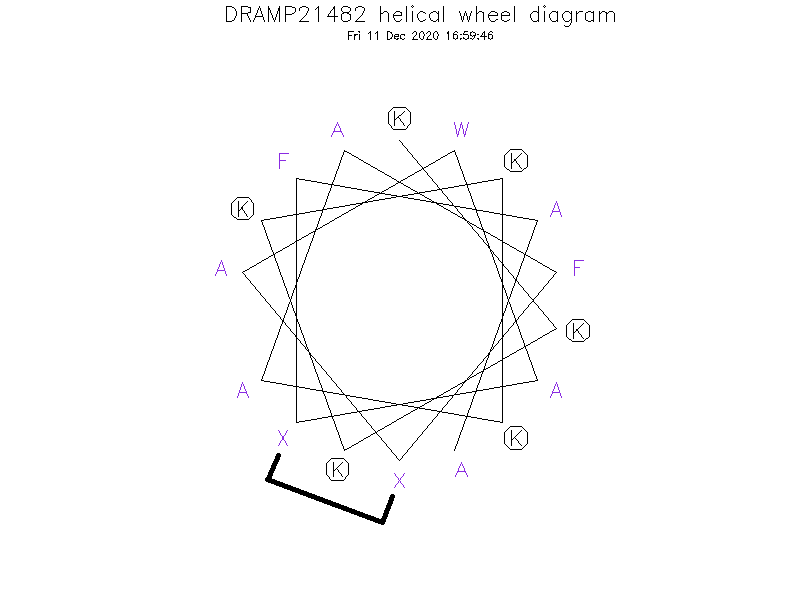-
-
-
Sequence
- KKKKKKAAFⓍAWAⓍFAA
-
-
Original Sequence
- KKKKKKAAFAAWAAFAA
-
Source
- Synthetic construct
-
-
Biological Activity
- Antimicrobial, Antibacterial, Anti-Gram-
-
- Function: Antibacterial activity against Gram-negative bacteria. No experiments about antibacterial activity against Gram-positive bacteria are recorded.
-
Target Organism
-
- [Ref.29275987] Gram-negative bacteria: E. coli (MIC= 1.0 μM)
-
Hemolytic Activity
-
- [Ref.29275987] MHC = 3.8 μM against human red blood cells. Note: Minimum hemolytic concentration (MHC) is the minimum peptide concentration at which red blood cells undergo > 2% hemolysis.
-
Cytotoxicity
-
No cytotoxicity information found in the reference(s) presented
-
Linear/Cyclic
- Cyclic (Stapled)
-
N-terminal Modification
- Free
-
C-terminal Modification
- Amidation
-
Special Amino Acid and Stapling Position
- ①The Ⓧ (position: 10 and 14) in sequence indicates 2-(4'-pentenyl) alanine. ②Ⓧ (10) and Ⓧ (14) are cross-linked by hydrocarbon stapling.
-
-
Secondary Structure
- ①Random coils with only a small amount of helical structure in aqueous buffer. ②α-helix in SDS detergent micelles.
-
Structure Description
- ①Similarly, the stapled peptide, S-6K-F17 is predominantly random coil in aqueous buffer with only a small amount of helical structure despite the presence of the staple - a feature likely due to the large stretch of non-helical Lys residues that flank the stapled portion of the sequence. ②As expected, in detergent micelles S-6K-F17 adopts a helical structure, paralleling the unstapled peptide.
-
-
There is no predicted structure for DRAMP21482.
- Literature 1
-
Title
- Influence of hydrocarbon-stapling on membrane interactions of synthetic antimicrobial peptides
-
-
Reference
- Bioorg Med Chem. 2018 Mar 15;26(6):1189-1196. doi: 10.1016/j.bmc.2017.10.020. Epub 2017 Oct 21.
-
Author
- Tracy A Stone, Gregory B Cole, Huong Q Nguyen, Simon Sharpe, Charles M Deber

